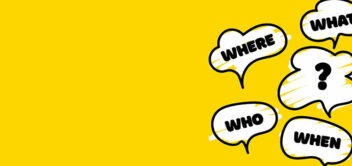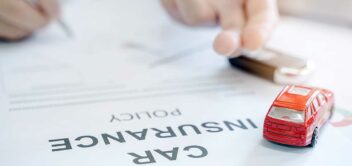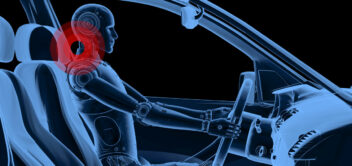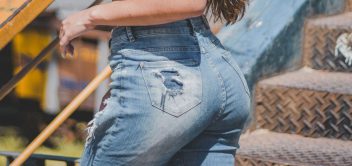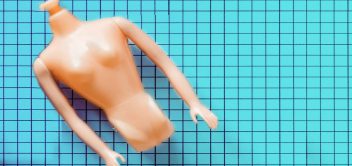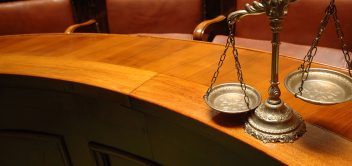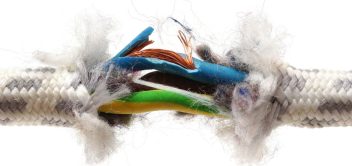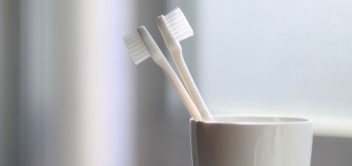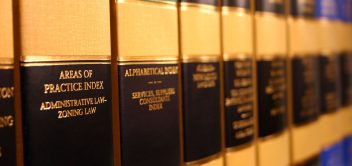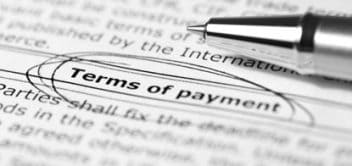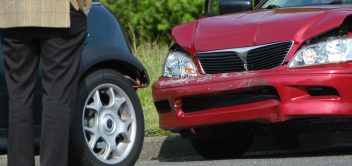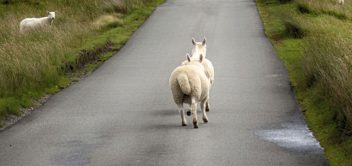Claiming for Animal Attacks | Private or Public Places
Animal Attack Injury Claims
If you or your child have been attacked by an animal, for example a dog you may be entitled to pursue an injury claim. The attack doesn’t necessarily mean a bite but personal injury including a traumatic experience as a result of the attack, i.e. shock or a lasting anxiety, means you may be entitled to claim for yourself or on behalf of your child. This applies in public places and in private residence.
Until the coming into force of The Control of Dogs Act 1986 (Section 21) the victim of an attack by a dog was required to prove a mischievous propensity in the dog. This was usually achieved by showing that the dog had previously attacked someone else. Hence the expression “a dog is allowed one bite”. That position changed in 1986 and since then it is a case of strict liability; the owner of a dog is liable in damages for damage caused in an attack on any person by the dog and for injury done by it to any livestock, and it is no longer necessary for the person seeking damages to show a previous mischievous propensity in the dog or to show that the injury or damage was attributable to any neglect on the part of the dog owner.
Home Insurance May Cover an Animal Attack Injury Claim
It should be noted that where a dog owner owns or occupies a premises which is insured, such person may well be insured for any injury caused by his/her dog to any third party under the public liability section of the policy (usually the contents insurance policy).
Animal Owners Duty of Care – Occupiers Liability Act
Under the Occupiers Liability Act of 1995, the Control of Dogs Acts 1986 and 1992, the Control of Horses Act 1996 and the Animals Act 1985 the owner of an animal has a duty of care to take reasonable steps to ensure the safety of members of the public who come in to contact with that animal.
Each type of animal is categorised differently under the headings “wild or domestic animals”. The Courts recognise that persons who keep a wild animal keep the animal at their own peril and if such an animal causes damage the owner may be strictly liable.
Mischievous Propensity – Tame Pets misbehaving
The owner of a tame animal however is liable only if he knows that the animal has a “mischievous propensity” to do the damage complained of. However in the case of a dog, the owner will be strictly liable under Section 21 of the 1986 Act if the dog bites a person. Tame animals include dogs, cats, horses, cattle but there are exceptions to this class of supposed tame animals. For example some dogs are automatically deemed dangerous, in circumstances where they are clearly used as guard dogs for security purposes. So, different rules apply depending upon whether you are the victim of a dog attack or a dog bite.
The knowledge of mischievous propensity which an animal owner must have is actual knowledge, although it does not matter whether it is acquired from personal observation, from hearsay, or through another person.
The injured Plaintiff who argues that the young foal has a tendency to frolic and jump around people or that a dog that bounds enthusiastically at strangers will not have demonstrated a mischievous propensity to prove liability on the part of the animal owner. However it is sufficient for an injured Plaintiff to show that a dog “was always growling at children” (case of Duggan –v- Armstrong 1992)ie proof of a mischievous propensity is not that the dog will bite someone but that having displayed a vicious or fierce nature it may do so.
How Long to Make an Injury Claim?
You have two years from the date of your accident within which to make a claim after which time your case will become statute barred. If you have any legal questions or wish to start your claim, please do not hesitate to contact our dedicated and experienced team of solicitors who will be more than happy to talk you through the whole process and answer any questions that you may have. Contact us 7 days a week by Phone: 01 453 7890 Email: info@lawline.ie or fill out our Call Back Form.
Latest News \& Blogs
-
 Separation. Divorce. Nullity. Dissolution. Redress Scheme. What’s the difference?So, what is the difference between Separation, Divorce,. Nullity, Dissolution and the Redress Scheme? If you and your spouse have decided to end your relationship there are options for every type of long-term relationship. Here is an outline of 7 different types of separation for those who are married or in a long-term civil relationship. …Apr 08, 2025
Separation. Divorce. Nullity. Dissolution. Redress Scheme. What’s the difference?So, what is the difference between Separation, Divorce,. Nullity, Dissolution and the Redress Scheme? If you and your spouse have decided to end your relationship there are options for every type of long-term relationship. Here is an outline of 7 different types of separation for those who are married or in a long-term civil relationship. …Apr 08, 2025 -
The Answers: Common Questions About Court Orders – Family LawHere’s everything you need to know about Court Orders, Access, Informal Arrangements and more. Looking for answers to your most pressing legal questions about family law and court orders? In this article, we’ve answered the most common questions people have when it comes to navigating the legal system in matters relating to family…Feb 08, 2024
-
What to do when loved one diesSteps you need to take when a loved one dies Losing someone you love can be extremely difficult. At such a stressful time it can be a daunting task to have to deal with their affairs. Below we set the steps that you must take as soon as possible and the steps that don’t require your immediate attention: You should make sure to notify fri…Sep 25, 2023
-
Compensation for Hit & Run Road Accidents in Ireland – Claiming against MIBIBeen involved in a road traffic accident and don’t have details of the other driver and / or they have no insurance? The first thing you should do, if you have been involved in a road traffic accident, ‘ideally’ is get the details of the other driver involved. However, this is not always possible. If you have been unable to o…Aug 30, 2023
-
Fewer Claims But Higher Premiums – CompensationCompo Culture or Insurance Scam – Personal Injury Claims The insurance industry in Ireland has been proclaiming for a long time that compensation claims pay-outs are too large in order to justify their exorbitant premiums. They also maintain that exaggerated and fraudulent claims add significantly to the cost of motor and business insura…Jan 26, 2023
-
Los síntomas del latigazo cervical, los tratamientos y cómo reclamar una lesión en Irlanda.Symptoms of Whiplash, Treatments and how to claim for an Injury – Spanish Language Services Entonces, ¿qué es el latigazo cervical? l latigazo cervical lo sufren cientos de víctimas de accidentes de tráfico todos los días. Hay muchas formas en las que puede sufrir una lesión por latigazo, pero el accidente automovilístico es …Nov 14, 2022
-
Os sintomas de Whiplash, tratamentos e como reclamar por uma lesão na IrlandaThe symptoms of Whiplash, Treatments and how to claim for an Injury in Ireland. Synnott Lawline Solicitors – Providing Legal Services in Portuguese Language. Então, o que é Whiplash? Centenas de vítimas de acidentes rodoviários sofrem com Whiplash ou Síndrome do Chicote. Há muitas maneiras de sofrer uma lesão no pescoço…Nov 14, 2022
-
Injuries Resolution Board Assessment Almost Doubled in High CourtValue of a Personal Injury uplifted in High Court by almost 90% High Court Uses the New Personal Injury Guidelines for First time since its Introduction in March 2021 Judgement was delivered on 13th October by Mr Justice Hanna in a High Court personal injury action taken by a client of Synnott Lawline Solicitors as reported in the Iris…Oct 14, 2022
-
What is the Cap on General DamagesWhat is the Maximum Compensation figure for General Damages? In 1984 there was a “cap” placed on the maximum award payable for General Damages i.e., for pain and suffering at £150,000. This means that from 1984 the most a plaintiff could be awarded for pain and suffering was £150,000. This decision was made in the case of Sinnott v Quinn…Sep 13, 2022
-
What to do if you were Involved in a Car AccidentInvolved in a car accident? Here’s our list of best steps to take after the accident If you are in involved in a car accident, be it that a third party driver runs into and hits you or if you have the unfortunate mishap of crashing into another vehicle, then here are the necessary steps which should be taken immediately after the acciden…Aug 01, 2022
-
Pitfalls of Popular Cosmetic Surgery Procedures – What you need to KnowCelebrity Culture, Social media and Cosmetic Surgery The boom in the sudden popularity of cosmetic surgery procedures; facial, Breast and Butt! is often linked to social media where young girls are constantly bombarded with insta perfect pictures of voluptuous celebrities. People’s Perception of beauty has changed dramatically over rece…Aug 20, 2019
-
10 things to Consider before getting Plastic SurgeryValuable Tips on How to Choose the Right Plastic Cosmetic Surgeon There has been a massive rise over recent years in the number of people making the decision to undergo some form of plastic or cosmetic surgery. Many claim the jump in these procedures is being led by millennials and what is referred to as “Instagram Vanity”. The younger gene…Aug 14, 2019
-
Boy gets €3M over Birth Brain Injuries€3 Million Awarded to Young Boy for Birth Brain Injuries Claim Synnott Lawline Solicitors secures €3m interim payment in med neg action for boy brain damaged at birth – Irish Examiner 12 Feb 2016 ‘A boy who sued over severe brain injuries suffered during his birth at Dublin’s Rotunda Hospital has secured an interim payment of €3m under …Oct 12, 2018
-
What was the Book of Quantum – PIABBook of Quantum – The Guidelines on Claim Awards The Book of Quantum is used as a general guideline as to the amount that may be awarded or assessed to a claimant for their Personal Injury Case. This book was introduced by PIAB (The Injuries Board) in 2003 to give clear guidelines on fair amounts to be awarded for pain and suffering…Sep 20, 2018
-
Defamation on Social Media PlatformsClaiming for Defamation of Character on Social Media In recent times there have been successful defamation claims brought in Ireland regarding defamatory statements made on Facebook and Twitter: Hospital Worker awarded €65,000 after being Defamed on Facebook >Man order to pay €75,000 for Defamatory Facebook Comment > Defamatory …Jul 04, 2018
-
Thinking of having Breast Surgery? What you need to knowSo you’ve made the decision to have breast augmentation surgery but with all the time spent day-dreaming about how perfect the results will be, have you actually fully researched possible surgery techniques and the type of results to expect post op. A cosmetic surgeon will be in the best position to advise a patient as to what the b…Dec 08, 2017
-
Had Negligent Dental Treatment Abroad?, You may be entitled to Pursue a ClaimIf you were referred abroad for treatment by an agent representing the foreign dentist in Ireland, a dental negligence claim must be made within two years. The dental negligence claim must be made from the date when you received the negligent treatment. In certain circumstances, you may be able to bring your claim after the two years has expi…Nov 13, 2017
-
US Court decision could Trigger PI Claims in IrelandUS Court decision – Trigger Personal Injury Claims in Ireland Thousands of personal injuries claims could be made against American companies in the Irish courts because of a landmark US Supreme Court decision, the Irish Independent reports. The ruling in Bristol-Myers Squibb Co. vs Superior Court of Cali…Sep 01, 2017
-
Medical Negligence Law – Do I have a Claim?Medical Negligence Law and Misdiagnosis – What can be claimed? In order to succeed in a claim for medical negligence in Ireland, it is necessary to prove that the medical practitioner was guilty of a failure which was so unacceptable that no other medical practitioner with the same level of skill and expertise would have behaved in …May 15, 2017
-
Defective Products – Who is Liable?What does the Liability for Defective Products Act (1991) actually cover? Under the Liability for Defective Products Act (1991) a producer shall be held strictly liable for damages in tort to either property or an individual which is caused wholly or partly by a defect in their product. Under the Act an injured party has 3 years within whi…Mar 28, 2017
-
Types of Dental Negligence InjuriesDental Negligence – Dental Malpractice Dental negligence or dental malpractice can be defined as an injury caused by a dentist which would have been avoidable had the dental practitioner not failed in their duty to provide proper care. Under the Medical Practitioners Act 2007 dentists are legally recognised as medical practiti…Dec 02, 2016
-
The Injuries Resolution Board – What it’s all aboutThe Injuries Board formally known as PIAB was set up in 2004 on foot of the PIAB Act 2003 and is a statutory body which provides independent assessment of personal injury compensation for victims of workplace, motor and public liability accidents. If you have sustained injury as a result of a road traffic accident or an acci…Oct 26, 2016
-
Road Traffic Accidents – What Cyclists need to knowHave you been in a Road Traffic Accident as a Cyclist? You may cycle to work, school or college every day. Or you might just like nothing better than a leisurely cycle through the countryside. However often you get on your bike, accidents can happen and it’s best to be prepared. We’re sorry to report that the RSA say tha…Oct 06, 2016
-
Thinking about having Cosmetic Surgery?If you are thinking about having Plastic or Cosmetic Surgery, here are questions you may wish to ask your surgeon during your initial consultation: If this is something you’ve always wanted to have done, make sure you fully research all your options. Once you have completed your research, the next step will be to make an appointment for …Oct 05, 2016
-
Injured in a Public Place – What are your Options?If you’ve sustained Injuries from a Workplace Accident – Here’s what you need to know In recent months, there have been many stories in the news about tragic accidents in workplaces. These horrendous incidents resulted in the loss of life and every year in Ireland, twenty or thirty people may lose their life in workplace accide…Sep 14, 2016
-
Been Injured at Work – What you Need to Know About Starting a ClaimIf you’ve sustained Injuries from a Workplace Accident – Here’s what you need to know In recent months, there have been many stories in the news about tragic accidents in workplaces. These horrendous incidents resulted in the loss of life and every year in Ireland, twenty or thirty people may lose their life in workplace accide…Sep 06, 2016
-
Problems with making your own Injuries Resolution Board (PIAB) ApplicationExamples of Complications when you do your own Application Since the introduction of the Injuries Board in 2004, all personal injury claims must first proceed through the Injuries Resolution Board (PIAB) for assessment before court proceedings can be issued. The idea surrounding the Injuries Board was that there should be no need for a claiman…Sep 05, 2016
-
No Win No Fee Defined – What it MeansNo Win No fee Defined – What it means for your Legal Fees This is a phrase you probably hear about all the time. In personal injury law, it was intended to give you, a member of the general public a fighting chance when it comes to dealing with big business like insurance companies for example. It simply means that unless you succeed in your…Aug 30, 2016
-
What is the value of my Personal Injury Case?What Influences the Value of a Personal Injury Case There is one thing that a lot of people usually ask their lawyers, how much will I receive for my personal injury case? And what is the manner in which my case will be handled. With the help of a specialist injury lawyer, a lawyer can provide guidance about what you will get from your pe…Aug 17, 2016
-
Been Injured in a Car Accident? – What you Need to KnowHave you suffered Injuries from a Car Accident? Here’s what you need to know You might’ve thought that it could ever happen to you. But if you’ve been in a road accident, you know only too well that it is not always about your own skills or experience as a driver. When you are out on the road, you are at the mercy of other road-users too…Aug 15, 2016
-
What is Medical Negligence?Medical Negligence Explained In general Medical Negligence is the failure of a Doctor, Consultant or any other medical personnel to meet certain standards of care relating to the medical profession. These standards are commonly based on what a reasonable doctor with the requisite knowledge and skills would or would not do. In other words …Aug 11, 2016
-
How Long do I Have to Make a Personal Injury Claim?Wondering long you have to Start your Injury Claim? As a general rule an accident claim must be registered with The Injuries Board (and acknowledged) within two years of the accident date. There are exceptions, In particular, where the “date of knowledge” is some time after the accident date, then the two year limitation per…Aug 10, 2016
-
The Injuries Resolution Board (PIAB) – 5 things you need to knowPIAB Assessments – 5 things About the Process The Personal Injuries Assessment Board PIAB was established in 2003. They’re a government body which provides independent assessment of personal injury settlements for victims of workplace, motor and public liability accidents. At Synnott Lawline Solicitors, we have many years of…Aug 09, 2016
-
Dental Negligence – Types of Injury ClaimsWhat are the Types of Dental Negligence? When it comes to getting dental treatment we expect to be treated with care and expertise by dental professionals, so it can be very distressing if you have suffered Dental Negligence. Dental negligence is a type of Medical Negligence for which a medical negligence injury case can be started when care…Jul 28, 2016
-
I was in a Car Accident, Do I have a claim?Have you been involved in a Car Accident? Being involved in a car accident is a traumatic event. Not only does your car get damaged but you and the other people involved in the car accident may suffer minor to severe personal injuries. There is also the psychological trauma of being suddenly thrust into an unexpected and dangerous situati…Jul 26, 2016
-
Injured in a Cycling CollisionIf you have been Injured in a cycling collision – you may be entitled to claim Do you cycle to work, school or college, cycle for pleasure or sport around the countryside? Even though drivers and cyclists tend not to cooperate on the road no-one wants a collision! But unfortunately accidents can happen and it’s best to be prepared. We…Sep 18, 2015
-
Don’t lose your Licence. Dangerous Driving in IrelandPenalties imposed for Dangerous Driving Being charged with dangerous driving in Ireland is a very serious offence and can incur a hefty sentence, if found guilty. The penalties imposed for dangerous driving will depend on whether or not a member of the public has been harmed or a death has occurred. If it is the case that a member of the public…Sep 18, 2015
-
The Law. Accidents caused by Animals on RoadsThe Law & Liability – Accidents caused by animals straying onto roads Prior to the Animals Act of 1985, no liability was attached to the owner of domestic animals which strayed onto the road and caused damage and so provided for an immunity to landowners in respect of animals straying onto the roadway. Gibbs – v – Comerford (1942 Iri…Sep 18, 2015
-
Synnott Lawline Solicitors raise funds for Simon CommunityPress Release: Synnott Lawline Solicitors launch new initiative to raise funds for homeless and housing charity – Dublin Simon Community For any person making a single will with the firm between February and December 2015, the entire fee of €100 goes directly to the Simon Community. For anyone making a double will, the entire fee of �…Sep 18, 2015
Meet our Legal Team
No Win No Fee Explained
No Win No Fee – The legal term used to describe how solicitors take on a case where they pay the costs of the litigation so Irish Law Firms who operate on this basis pay for the medical reports, experts fees and other legal costs associated with your injury case. It’s a common practice for specialised personal injury firms to operate on a “no win no fee” basis. Solicitors are not allowed advertise no win no fee services.
Starting Your Injury Case
If you’ve suffered injury, loss, damage or expense as a result of the negligent act of omission of another party, then you may be entitled to claim from that other party or his/her insurers. Starting a case with our legal team is a seamless process. Subject to strict exceptions, you have two years from the date of your accident to commence legal proceedings. A different claims policy is in place for Children under 18.
How Much is My Claim Worth?
Personal Injury Claim amounts are difficult to value at the outset of any case but the value of your case in terms of General Damages will depend on the severity of the injury, the pain, suffering and inconvenience resulting from the length of time to recover and the prognosis for the future. In addition, you are entitled to claim for all financial losses and expense sustained by you as a result of the accident.

